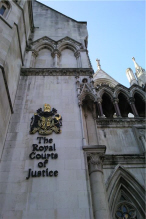Removing children
- Details
 A High Court judge has given guidance on cases where a local authority seeks to remove children living at home under a care order. Jason Hughes outlines the ruling.
A High Court judge has given guidance on cases where a local authority seeks to remove children living at home under a care order. Jason Hughes outlines the ruling.
Practitioners who do care proceedings will no doubt be fully aware of the changes to the Public Law Outline and in particular the timetable for children such that care proceedings should be concluded within 26 weeks. A possible unintended consequence of this is that local authorities, save in dire cases, appear to be working with families for longer before care proceedings are issued. When proceedings are issued it is not uncommon in certain cases for it to be agreed at court that children should be made subject to Interim Care Orders with the plan being that the child remains at home. This is also a feature of some cases where the final outcome is that the child remains at home but the under auspices of a final care order. It is not uncommon for such arrangements to be agreed between the parties at the time.
Although this may be a pragmatic arrangement difficulty can occur when things go wrong and the local authority choose to seek to exercise their parental responsibility by removing the child from the care of his parents. In such situations the local authority would no doubt assert (and in most cases likely have valid reasons) that they believe that the “child’s safety requires immediate removal”. The parents may well feel that the proposed action of removal is a disproportionate response to whatever difficulty may have arisen.
When an interim care order is in force the correct procedure is that the local authority should inform the parents of the proposed change of plan and have the matter remitted back to court so that the court can determine whether removal should be authorised (or if the local authority have acted unilaterally then whether the removed child should immediately return back to the parents.
In situations where court proceedings have concluded such that the child remains at home but with the local authority having a final care order then the situation is different, in line with the case of Re W and B (Children) (Care Plan) [2002] H.R.L.R. 26 “a cardinal principle of the Children Act 1989 was that the courts were not empowered to intervene in the way local authorities discharged their parental responsibilities under final care orders”.
This situation was considered in the case of Re: DE [2014] EWFC 6 (Fam) that confirmed that the recent provisions of Re B-S should prevail such the local authority should identify the possible options and analyse the arguments for and against removal and should only consider removal if it is necessary to safeguard or promote the child’s welfare. Without this then any removal or threat of removal would be an interference with the Article 8 rights of the parents and the child. If the parents feel this is the case then the appropriate remedy would be to apply to discharge the care order and further to seek an injunction under s.8 of the Human Rights Act 1998. If such an application is made then directions should be made for the filing of evidence followed by a contested hearing.
In Re: DE Mr Justice Baker provided the following summarised guidance in cases such as these:
- Where a care order is made with the child remaining at home it should be a term of the care plan, and a recital in the care order, that the local authority agrees to give not less than fourteen days notice of a removal of the child, save in an emergency;
- The local authority must rigorously analyse all realistic options and involve the parents in the decision making process;
- If the parents choose to seek to discharge the care order then consideration should also be given to also bringing an application under s.8 Human Rights Act;
- If the local authority give notice that they intend to remove the child which is met with an application to discharge the care order then they must not remove the child unless his immediate removal requires it and must continue to consult with the parents; failure to do this is likely to be unlawful;
- On an application to discharge the care order the court needs to determine whether this also gives rise to a likely application under the Human Rights Act, this is necessary as parents may not qualify for legal aid and so may be bringing the applications themselves;
- Upon hearing an application under s.8 Human Rights Act, pending the outcome of an application to discharge the care order, then the court should normally grant the injunction unless the child’s welfare requires his immediate removal.
In essence the removal, or proposed removal, of a child from the care of his parents whether at an interim stage or following the conclusion of proceedings must only be considered as the last possible resort. Save in genuine emergency the local authority should only remove the child once a robust analysis of all available options has taken place that conclude this is the only viable option and further there needs to be ongoing consultation with the parents with clear notice being given to afford them the chance to have the court scrutinise the proposed removal.
Jason Hughes is a barrister at College Chambers. He can be contacted












































